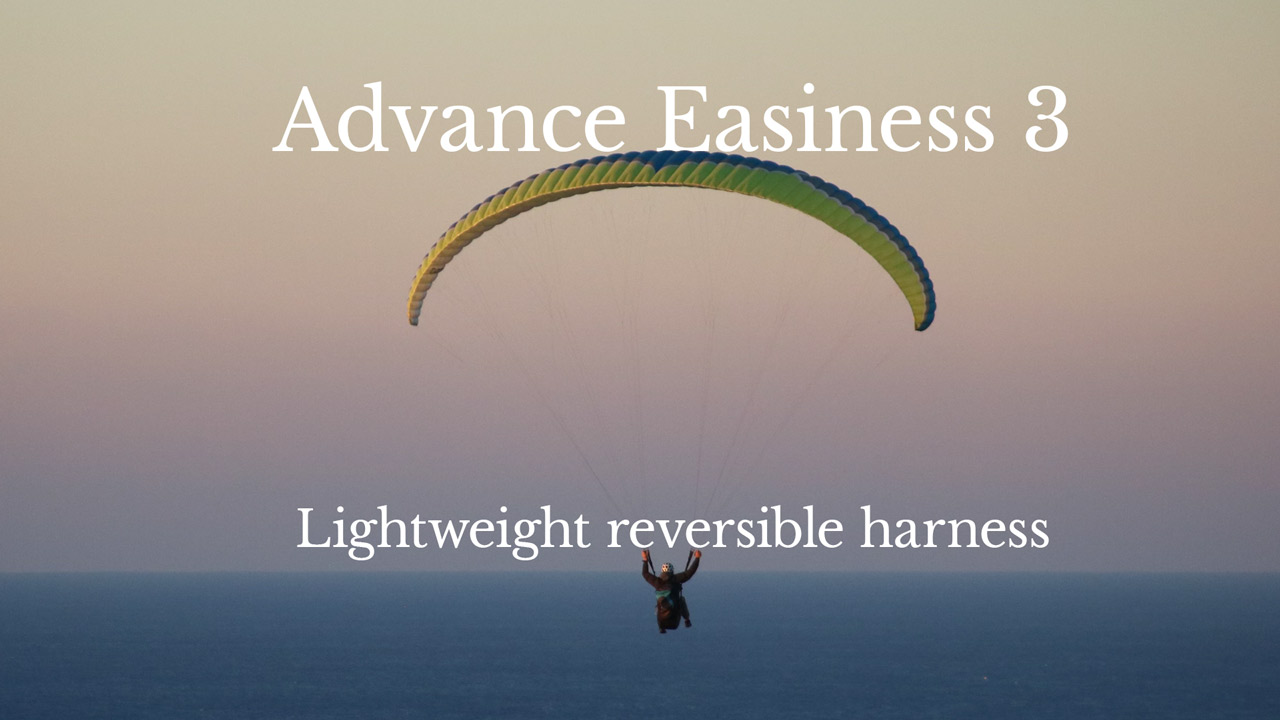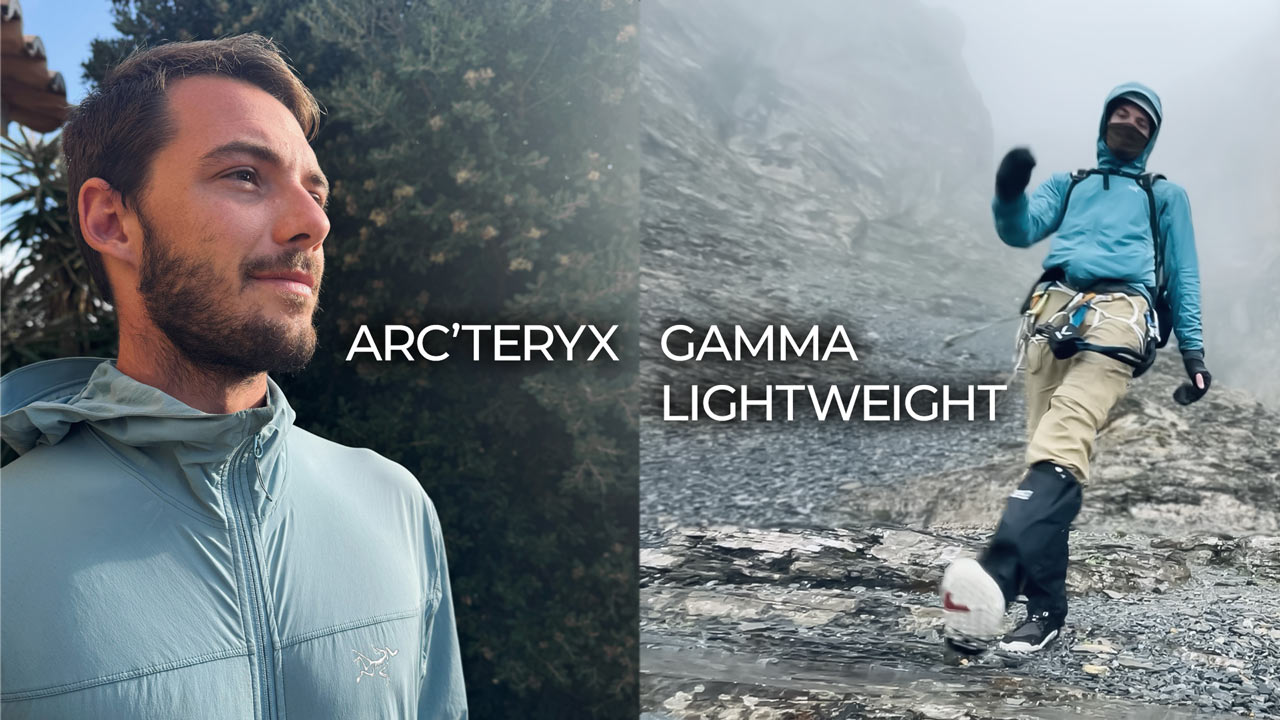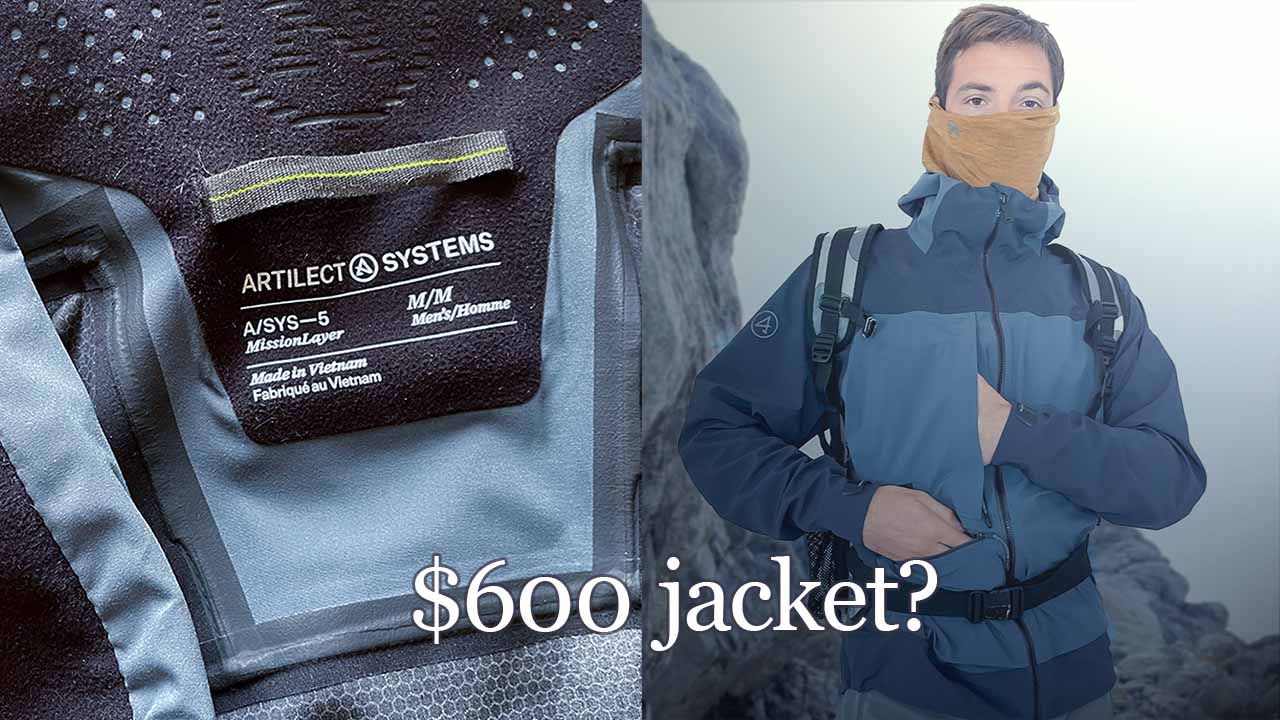- review: Arc’Teryx Gamma lightweight jacket – what OutdoorGearLab doesn’t tell you - October 22, 2025
- Has AI killed it all? The future of this website & my projects - October 12, 2025
- Review: Lono Wild – Best budget barefoot hiking shoes around? - April 30, 2025
Right out of flight school I was looking for something lightweight, packable, comfortable, and with some safety incorporated.
Buy nice or buy twice they say, and so I went with an Advance product – the Advance Easiness 3.
Is this a suitable paragliding harness for a beginner? Well, let me share with you my impressions of this 2.4kg reversible paragliding harness!
NOTE: I am a relatively new paragliding pilot with limited experience (~60 hours) with equipment and flying. Do not take my word for gospel.
This is a split-leg harness without a seatboard – generally this means less responsive weight-shift and a smoothed sensation in turbulent/patchy air. This can either be good or bad for a beginner pilot – many factors depending.
Lets jump into the rest of the review!
Table of Contents
Build quality
Advance is known for some the best build quality in the game, and I don’t really have to explain much here – stitching, material choice, overall construction – it’s all as you would expect from a top Swiss brand.
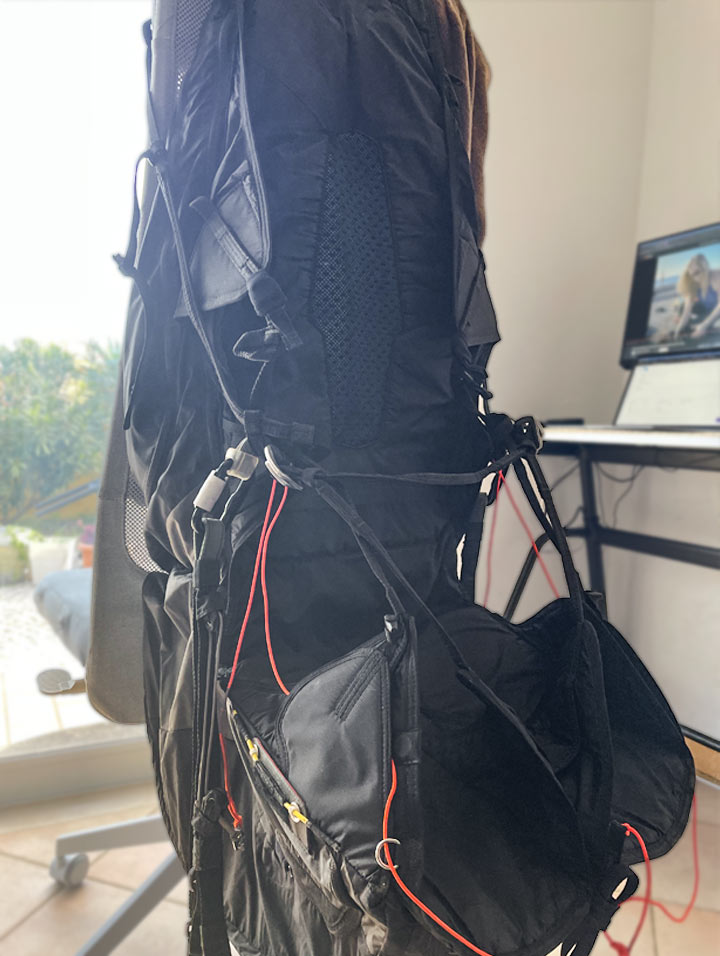

As the Easiness 3 is classified as a light reversible harness, there is a slight compromise in material strength. Particularly, the outer portion of the backpack module has seem some tears and rips from hiking, while the airbag inflator inlet saw a good sized tear. However, it’s not ultralight and can stand up to some abuse!
I purchased this harness secondhand so it was already worn upon arrival, but in my hours of groundhandling on terrain with plenty of rough & pokey things, I did put some more wear onto it. I would certainly not say it’s a harness for schools or training due to the amount of abuse those tasks stand up to.
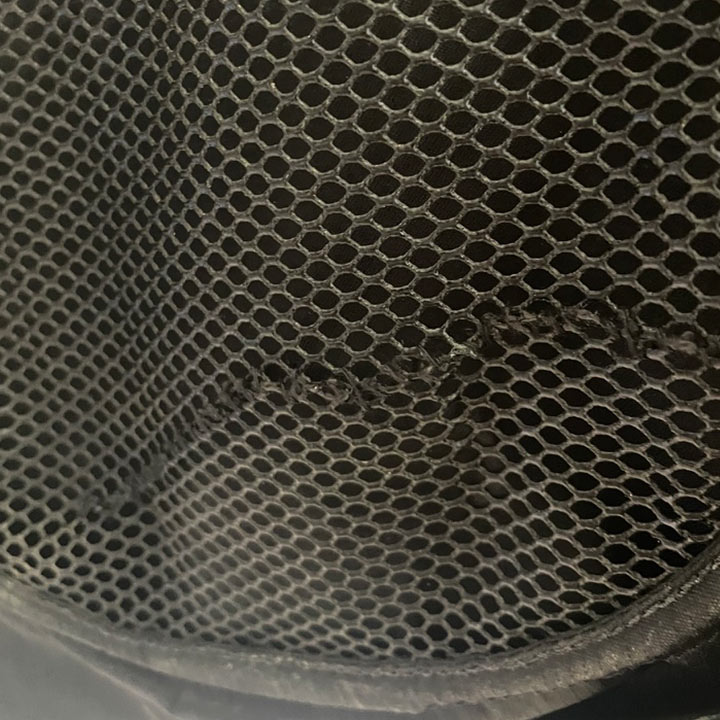

That aside – Advance makes some of the best of the best so you can be comfortable knowing they have done everything up to the highest standard and for me as my first harness out of flight school I have no complaints.
Comfort
Exceedingly important for any harness, the comfort of the Easiness 3 is I’d say quite good! When groundhandling it’s alright, though for me the thin straps around the groin do put a lot of pressure and I find myself needing to re-adjust the leg straps quite a lot to avoid painful pinching.
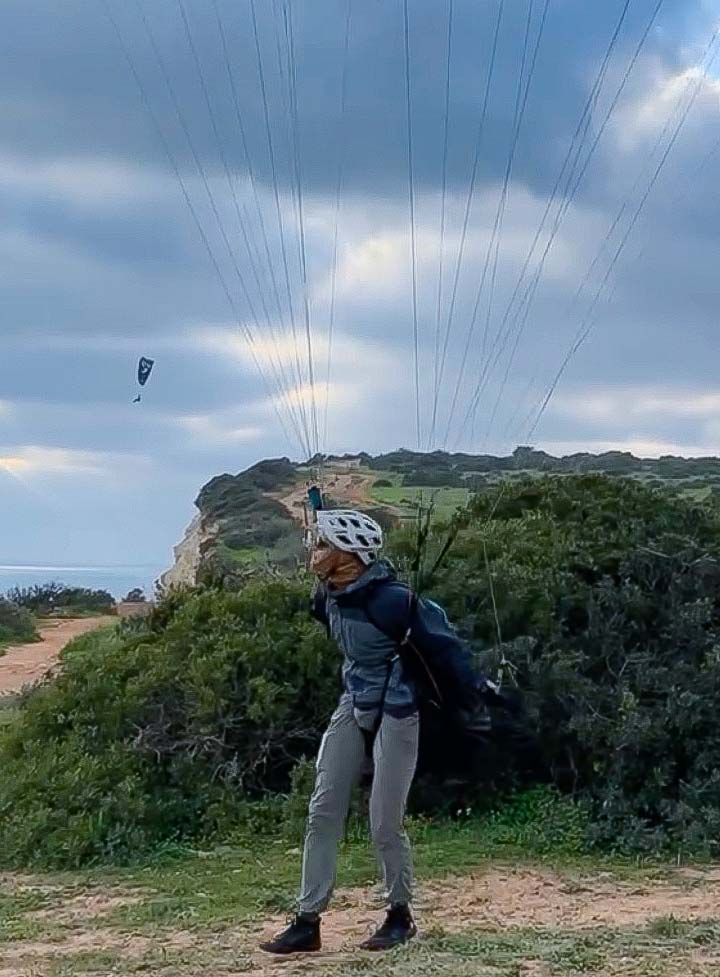

I feel no discomfort from the padding on the shoulders, back, or behind the legs. I have done flights up. to 2.5 hours long in this harness with good success – however when going to landing my legs almost feel ‘numb’ from my seating position and I need to prepare my legs for ground contact before I get too low!
However, my height (189cm / 6’3″) at 83kg/185lbs in the Easiness 3 size L (for 178-202cm) does leave me a bit to be desired. I found after the ~1 hour mark it feels I’m a little bit ‘scrunched’ in – like I’m sitting in a chair a bit too small for me.
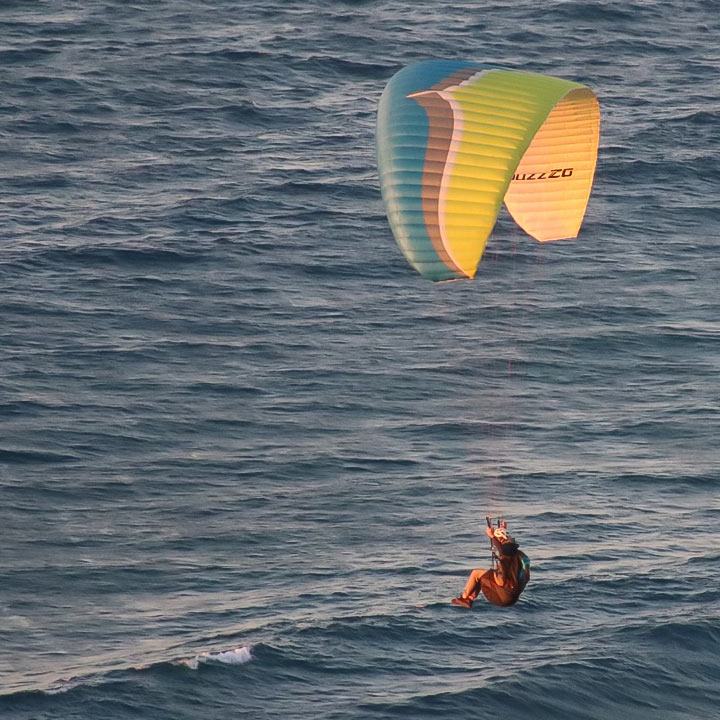

This leads to my really wanting to stretch my legs out and recline my back – which happens perfectly when I step on the speedbar. This makes me wish for a stirrup – which unfortunately Advance doesn’t officially support, unlike the Boundless and Progress 3 harnesses do.
However, I am someone who gets uncomfortable sitting on a chair in a classroom, bus, or airplane quite easily due to my frame and general restlessness.
Comfort in backpack mode
As this harness is designed with hike and fly in mind, comfort in backpack mode must also be considered since it may be on your back for hours or even days at a time!
With that in mind, I must say it’s quite good! It’s certainly not on the level of a framed backpack like the Osprey Exos 55 Pro, but you can’t expect that from a frameless backpack.
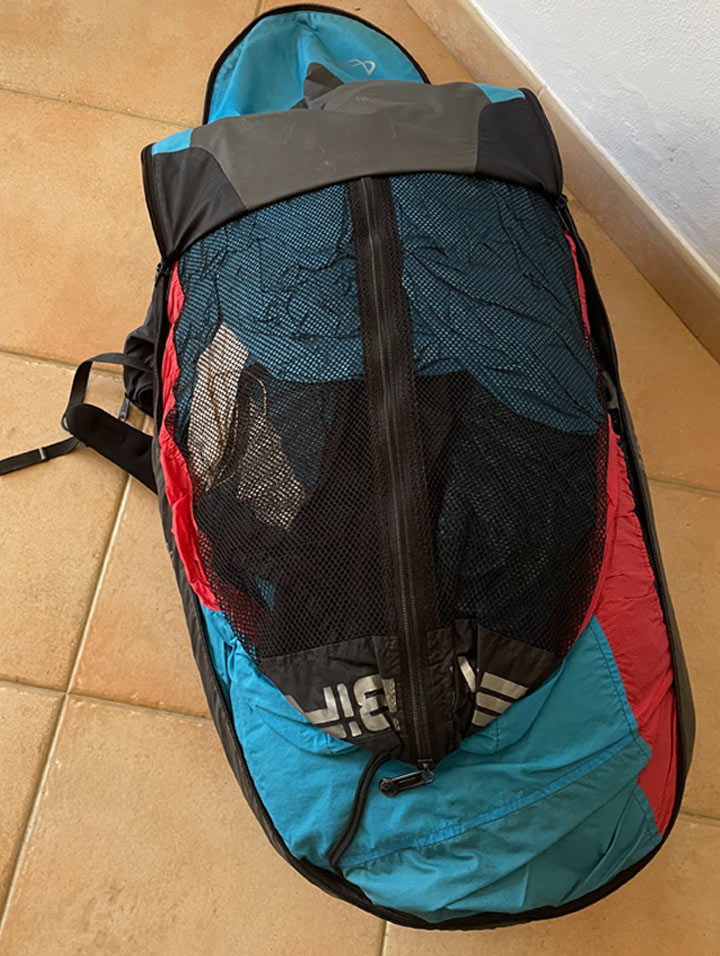

With careful packing I’m able to fit my full ML size Ozone Buzz Z6 wing inside, as well as helmet, some clothing, and that’s about it. With a lightweight hike and fly wing I’m sure I can fit a minimal vol-biv setup, though for serious multi-day Vol-Biv missions I’d opt for something at 80L or more. The Easiness 3 in L has a carry volume of 58L, but some of that is occupied by the harness by default.
With all the being said – comfort is a highly personal thing and your experience may be very different than mine, but the scrunched feeling is what primarily led me to wanting to upgrade to another unit.
Performance
Open harnesses aren’t designed for aerodynamic performance as a pod harness is – the Easiness 3’s performance can be measured by its in-air responsiveness, and capacity to fulfil its role as a lightweight harness for hike and fly and travel.
In flight performance
The seatboardless split-leg design is known to be ‘lazy’. Weightshift is different than a typical seatboard harness in the way that you rather need to ‘lift’ the buttcheek/leg opposite the side you want to turn, and push your weight into the side you want to turn, rather than leaning your body.
This can initially make turning difficult or even frustrating at the beginning when learning this new method, and potentially dangerous as some may rely too much on the brakes to do the steering for them.
However, I have not had much problems getting this weightshift down and I’m fine with it now.
I’m able to get quick turns, enter/exit spirals, do roll and pitch control all without a hitch.
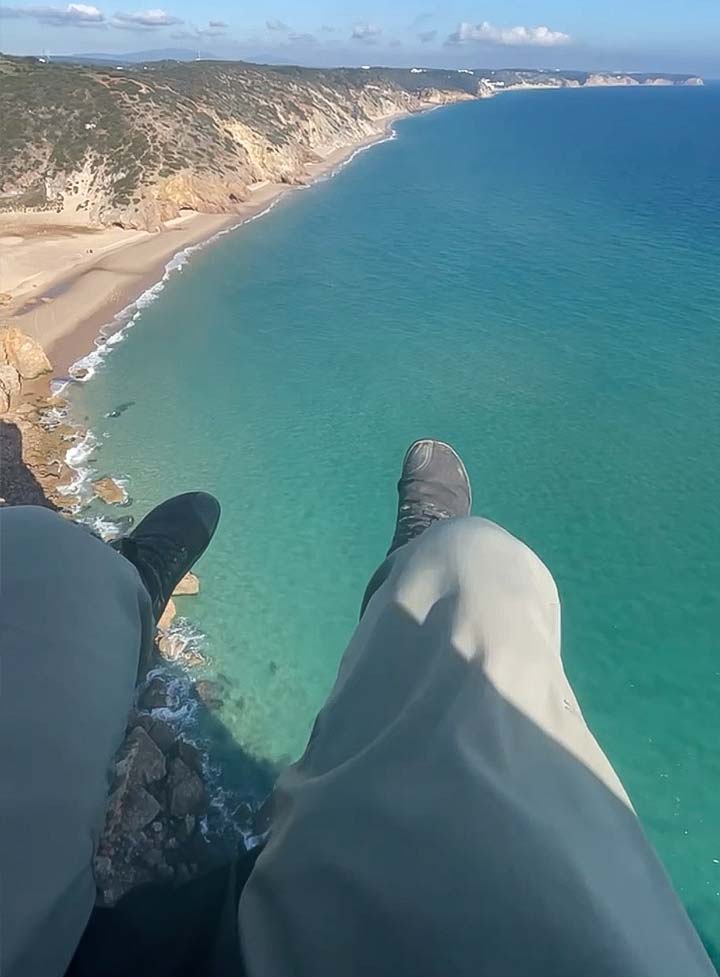

Next to mention is the responsiveness you feel from the glider. Naturally, as you are more ‘suspended’ in the seat like a hammock, feedback from your wing will be dampened. This can either be a pro or a con as your sense of what’s happening overhead is weaker, while your internal state is calmer as any roughness or turbulence is smoother.
Keep in mind that I am not an experienced thermalling or XC pilot so my opinion is to be taken with a few grains of sand, but I can imagine the in-flight comfort and lighter responsiveness is not quite the best for long-distance XC flying.
When pushing on speedbar the back naturally reclines for a more elongated position, closer to what you’d have in a pod. The speedbar pulleys are smooth and quiet.
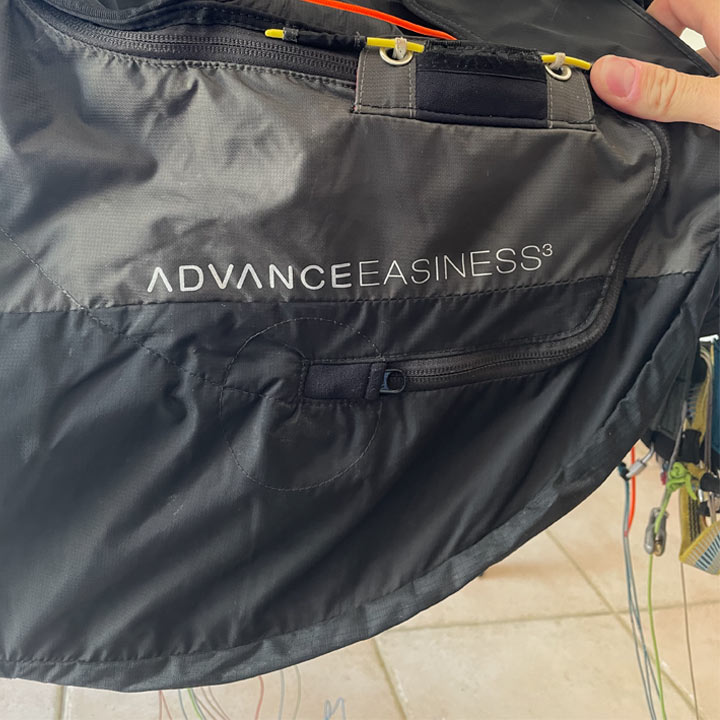

Still, I find I still get plenty of feedback from the wind and my wing from the harness and can feel when lift is on one side or if I’m losing pressure on the leading edge. Overall, I’m quite happy with the in-flight performance and feedback from the Easiness 3.
Hiking performance
You may spend 4 hours hiking up and 20 minutes flying down, so hiking performance is well-important as it’ll impact your whole journey too!
With my harness, wing, reserve, and gear, I total about 10kg loaded. That’s not superlight by any means, but it’s about how much I pack on my non-flying camping adventures. The Easiness 3 is capable of single-day hikes and vol-biv with compact & ultralight equipment, but not longer vol-biv with full cook systems and cold-climate equipment.
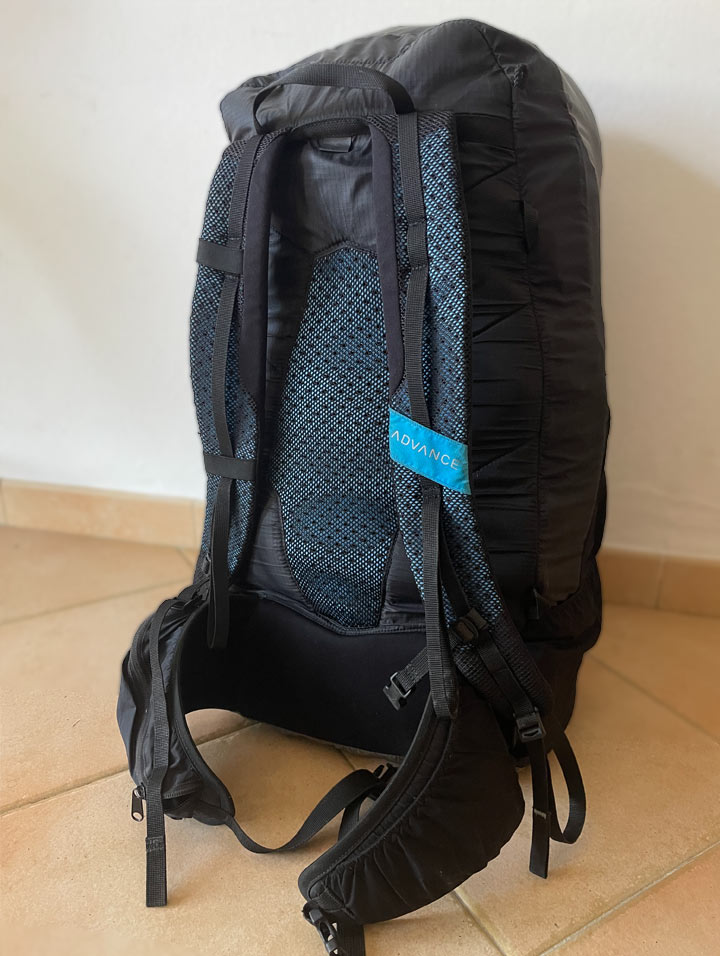

Comparatively, the Easiness 3 is not as good as a dedicated hiking rucksack, however it will certainly completes its role in good form. Plenty of adjustment points, hip belt pouches, stowage for trekking poles, easy-access water pouches, hydration bladder-compatible – it all works perfectly well!
In fact, the only reversible which I know of that has a proper backpack-style carrying system is the Swing Connect Reverse 3 with a Deuter suspension system – but that harness weighs 2+kg more, so it’s not quite a fair comparison.
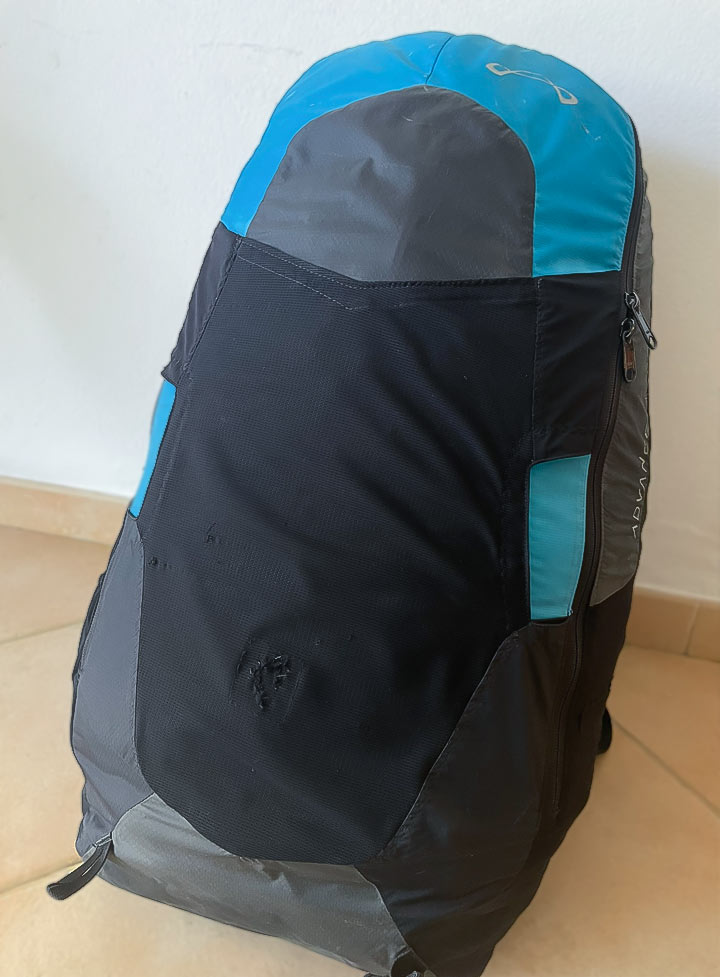

Overall, the hiking performance is really quite good, however if you’re planning multi-day adventures with more than 13kg of weight, I would opt for dedicated hiking or paragliding backpack to fit all your vol-biv gear.
Protection
The Easiness 3 has a single inflatable airbag which inflates once you launch, and primarily covers the butt and lower back.
This airbag module is removable and will shave off 500 grams for saving grams on a hike, or to make groundhandling easier (optional backside cover must be installed)
To me, this is a decent amount of protection, but does lack any form of protection for the mid and upper spine. For me this is okay, however I am someone who likes to err on the side of caution and like the added protection on my Advance Lightness 3.
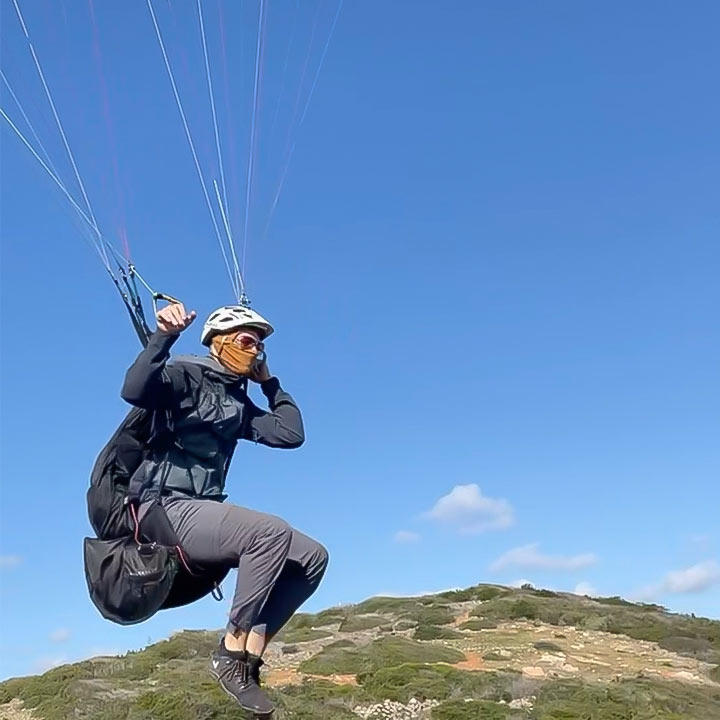

So – it’s a suitable amount of protection for bum landings. I’ve never had a butt landing neither in flight school ‘nor in my solo flying so I’ve never had to use it, but I’m sure it gives a nice amount of squish if you do land on your butt.
With that in mind, the airbag only inflates once you are in the air – when ground handling it will not yet be inflated and provide no protection!
It is for you to decide if this amount of protection adequate for your purposes and risk profile or not.
Ease of use
As the name suggests – it’s a very easy harness to use. Switching from backpack to harness is really a painless and simple process.
Put it on, do up all your buckles, and take off. No airbag to pump up, no complicated steps, just easy! However, I have a few gripes I would like to mention.
- The speedbar – I always find it detaching from the magnetic closure while ground handling and wrapping around my legs – once I ran and launched with the speedbar terribly tied around my leg so I had to land and sort that out. I instead now fold up the speedbar into the closure so it doesn’t dangle and catch, but now requires me to manually take it out with a free hand – not optimal when launching a coastal site with chance of blowback right after launch.
- The buckles – I don’t like these square AustriAlpin buckles. They’re perfectly safe, but even having used such systems for years upon years, I always fiddle and don’t like them. They’re also very hard to undo in emergency case such as landing in water. As a result I step in and out of the harness rather than buckle up to safe the time and frustration.
- The Foras Twist Lock carabiners like to catch the thin lines on my Ozone Buzz Z6 quite easily – quite annoying.
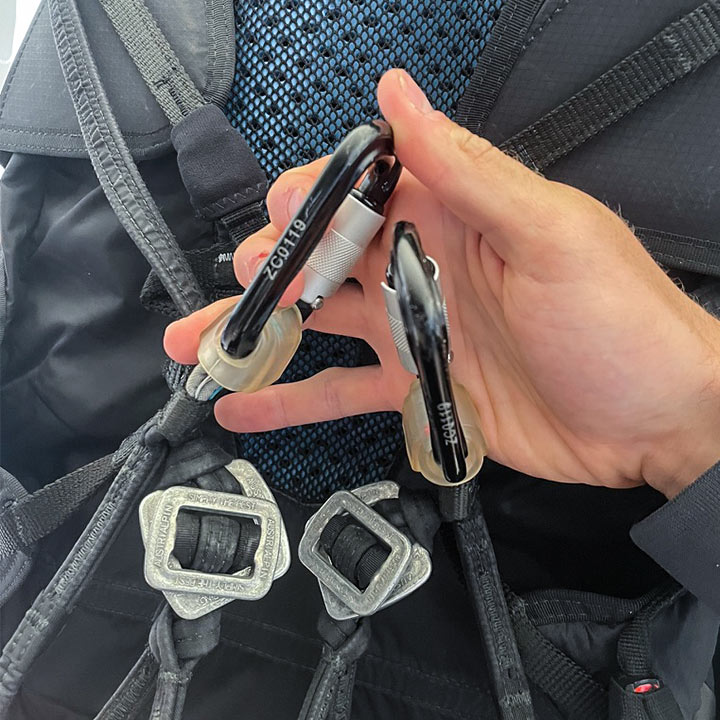

The in-flight posture adjustment mechanism works quite well and is easy to do while remaining quite secure. Reversing the harness into backpack mode is also quite easy, and vice-versa. I’ve never had a problem sliding in or out of the seat when preparing for landing or after launch.
Overall it’s quite a simple and effective harness, but I find others with a classic buckle system and rigid speedbar to be easier to use with less annoyances.
Features
The Easiness 3 is quite feature-rich, but also sacrifices in the same vain to reduce on weight. Here’s a list of the things for me it has but also lacks:
The Easiness 3 has:
- Underseat reserve
- Removable airbag
- Lightweight soft-speedbar
- Drink tube opening for hydration bladder
- Fits full-size wing (backpack mode)
- Hip pockets (backpack mode)
- Ice axe/trekking pole stowage (backpack mode)
- Helmet net (backpack mode)
The Easiness 3 lacks:
- Console area for instruments
- Stirrup
- Native radio mount
- Adjustable Leg-T straps
- In-flight pockets
Technically there is an in-flight pocket, but I struggle to access it so therefor to me it’s not viable.
As you can tell, the Easiness 3 has cut down on some aspects to save on weight. Personally, the stirrup and a flight deck for instruments is something I would really love to see in an Easiness 4 since those are two of the biggest things which have me looking for a different harness.
Otherwise, I was quite impressed with the features in backpack mode
Advance Easiness 3 good for beginners?
For me, the Easiness 3 has been an excellent harness for ground handling and coastal soaring. However, I am someone who has never had a bum landing, and has gotten quite good at ground handling and never had any incidents. The amount of protection from all other Advance harnesses (except the Strapless 3) is better, so that’s a compromise you need to personally weigh.
The weight and backpack mode makes it quite good for travel and hiking. At only ~2.4kg with airbag, there are not too many other systems which match in the specs it provides.
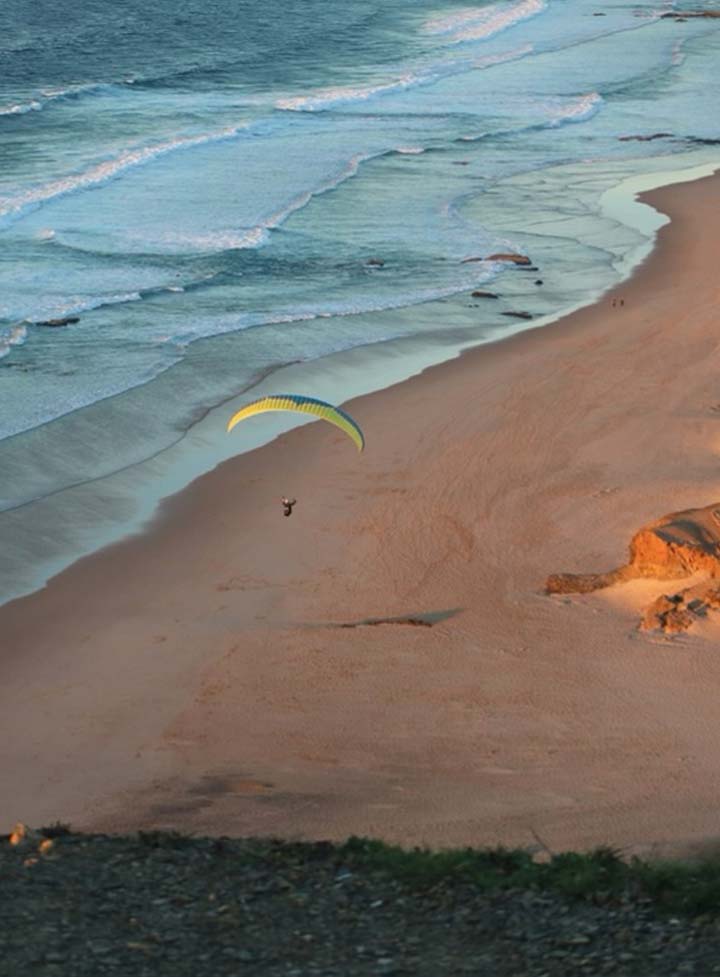

Seeing as a typical lightweight-pro hiking backpack is ~1kg+ and paraglider-specific rucksacks between 500-1000g, the harness + airbag component of the Easiness 3 can be calculated as ~1-1.5kg – which only a handful of other air-bagged harnesses match that weight.
All-in, I have enjoyed the Advance Easiness 3 quite a lot and it has fulfilled the all-rounder role for me quite well. I have upgraded to an Advance Lightness 3 pod harness for my coastal flying as a comfort upgrade.
If your flights are expected be less than 2 hours long, you expect to do lots of hiking or travel, and want a compact yet well-featured harness which can fit a full-sized glider, then the Easiness 3 is a good choice!
However, if you’re fresh out of flight school and aren’t so adept at ground handling and landings, then I’d certainly recommend something with more/foam protection and made more durable.
Thanks for reading my Advance Easiness 3 review – please ask any questions in the comments and I’ll be happy to help! 🙂
Related posts
Advance Easiness 3
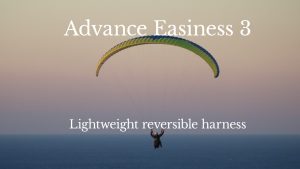

Lightweight reversible paragliding harness which has its strengths in hike and fly, coastal soaring, and travel.
Product Brand: Advance
4.6
Pros
- Lightweight
- Confidence-inspiring
- Well-made
Cons
- No stirrup
- No flight deck
- Connection system

